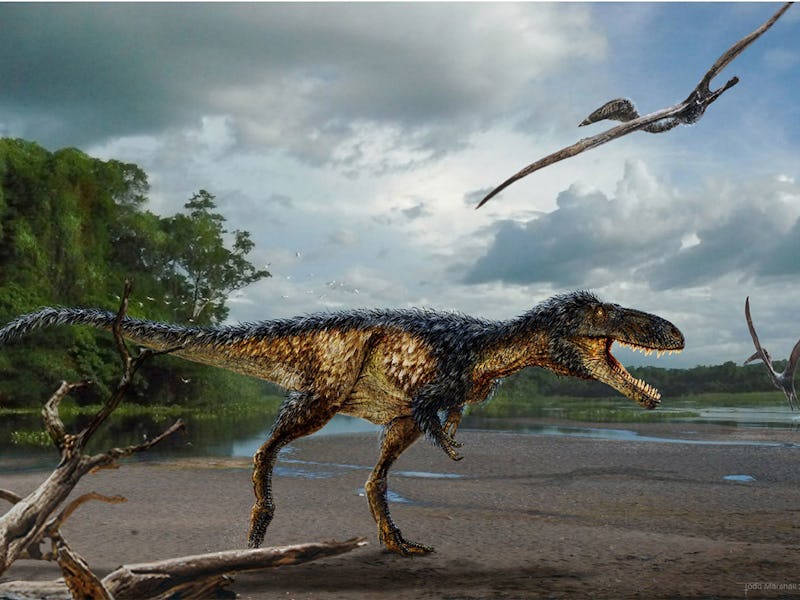Early Tyrannosaur Fossil Suggests Smarts Came First, Then Size
Brains came before brawn for the infamous T. rex.

At some point, the Tyrannosaurus rex got huge. The Cretaceous period’s apex predator and biggest fear for many Jeep owners regularly grew to 40 feet long and weighed in at almost 7 metric tons. But before that happened, new fossils show, the infamous T. rex was just a person-sized lizard with a big brain and good hearing.
Scientists have long known the T. rex’s used its large, well developed brain and sensitive inner ears to dominate the food chain, but they couldn’t account for how the Tyrannosaurus line grew to such gigantic sizes. The mid-Cretaceous fossil record has a 20+ million year gap, where paleontologists struggle to patch together evolutionary jumps like the T. rex’s growth spurt. The new discovery clears of this up, thanks to a particularly well-preserved skull fossil of a much earlier, much smaller predecessor to Jurassic Park’s big bad.
The specimen, named T. euotica, has bone structure that suggests that it had the same finely-tuned inner ear that the T. rex had, 100 million years before the house-sized killing machine roamed the earth. The developed inner ear let T. euotica hear a range of sounds other dinosaurs couldn’t, possibly allowing them to communicate with each other in more complex ways and pick out distinctions in sound that helped them find prey, both important traits for a hungry predator looking to get bigger and better.
“It is one of the closest cousins of T. rex and tells us that tyrannosaurs evolved sophisticated brains and senses before they became colossal apex predators,” Dr. Stephen L. Brusatte, a paleontologist at the University of Edinburgh in Scotland and lead author of a paper detailing the findings, told The New York Times.
In other words, the T. rex’s ancestors were pretty clever.
Velociraptors weren't the only ones with smarts.
Researchers found the fossil in Uzbekistan, one of the only places in the world where paleontologists can find rocks that are between 80 and 100 million years old. Without rocks from that period of time, the fossil record stops abruptly, making an abrupt gap in evolutionary history. Before the 20 million year gap, most of the T. rex’s ancestors were small, like T. euotica, and after, they were the size of the house. It’s the evolutionary equivalent to the freshman 15, except in this case scientists were baffled as to what caused the jump in size (for me, they know it was those Costco-jars of cheese ball things). But for Tyrannosaurs, we now know it was the evolutionary advantage of a wicked smaht brain and sensitive ears.